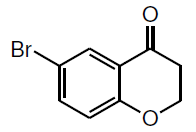Blueberries, and berries in general, are among foods labeled as "diabetes superfoods" by the American Association of Diabetes. Food science researchers at the University of Illinois have found that fermenting berries may improve their antidiabetic potential even more.
Recent research at the U of I includes the development of an alcohol-free blueberry-blackberry "wine" that those suffering from diabetes - who typically must avoid alcohol - can enjoy, while potentially reducing the effects of Type 2 diabetes.
"Unfortunately the number of people with diabetes is increasing astronomically around the world," says Elvira de Mejia, a food chemist in the Department of Food Science and Human Nutrition at U of I. "There are 100 million people around the world who have diabetes and that is increasing, without counting the ones who may be pre-diabetic and not know it."
Previous research has shown that dietary blueberries may play a role in reducing hyperglycemia in obese mice, therefore de Mejia and colleagues wanted to determine if a fermented, dealcoholized blueberry-blackberry beverage would enhance the potential of the phenolic compounds in the berries that are responsible for reducing diabetic markers.
A new study shows that the fermented berry beverage did reduce the development of obesity and blood glucose levels in mice on a high-fat diet.
The researchers had already determined that the berries, when fermented at low temperatures, resulted in an improved and higher concentration of anthocyanins. Anthocyanins, found in the pigments of fruits such as blueberries, grapes, and apples, have been shown to promote insulin sensitivity, decrease blood glucose levels in the blood, and enhance insulin secretion.
"We know that fruits, vegetables, cereals, legumes, and berries are good, but here we explain that after fermentation we improve and increase the concentration of these pigments [anthocyanins] and they are very high antioxidant components that benefit the body," de Mejia says.
A previous cell culture study with the alcohol-free blueberry-blackberry wine, showed good results toward inhibiting enzymes related to glucose absorption.
"In this in vivo study, as we increased the concentration of these anthocyanin-enriched extractions from blueberries and blackberries we saw an improvement in the uptake of glucose, meaning that the animals with the increased concentration were not as much in a state of hyperglycemia as the other animals."
The beverage included a ratio of 70 percent fermented blackberries to 30 percent fermented blueberries. The berries were collected from varieties grown at U of I's Dixon Springs Agricultural Research Station in southern Illinois. Alcohol was removed from the beverage by rotoevaporation and was replaced with water. Some of the sugars left over after fermentation were also removed in the process.
"We optimized the best ratio between blueberries and blackberries. Blackberries are very unique and I think that's one of the reasons why we selected a high concentration of them in this study. Blackberries have a very specific profile of anthocyanins, and that was amazing at lowering the absorption of glucose in this case," de Mejia says.
During the study, groups of mice with diet-induced obesity and hyperglycemia were given the fermented berry beverage or the beverage with higher or lower enriched concentrations of the anthocyanins (0.1x, 1x, or 2x). Another group was given sitagliptin, a commonly used medication for diabetes, and another group was given water only. All groups ate the same diet, calories, and amount of sugars otherwise.
While benefits were seen in all groups drinking the fermented beverage, de Mejia says the group on the highest concentration of anthocyanins (2x) showed the greatest results, comparable to what was observed in the group on sitagliptin. This included no increase in body weight, which de Mejia says was a surprise.




